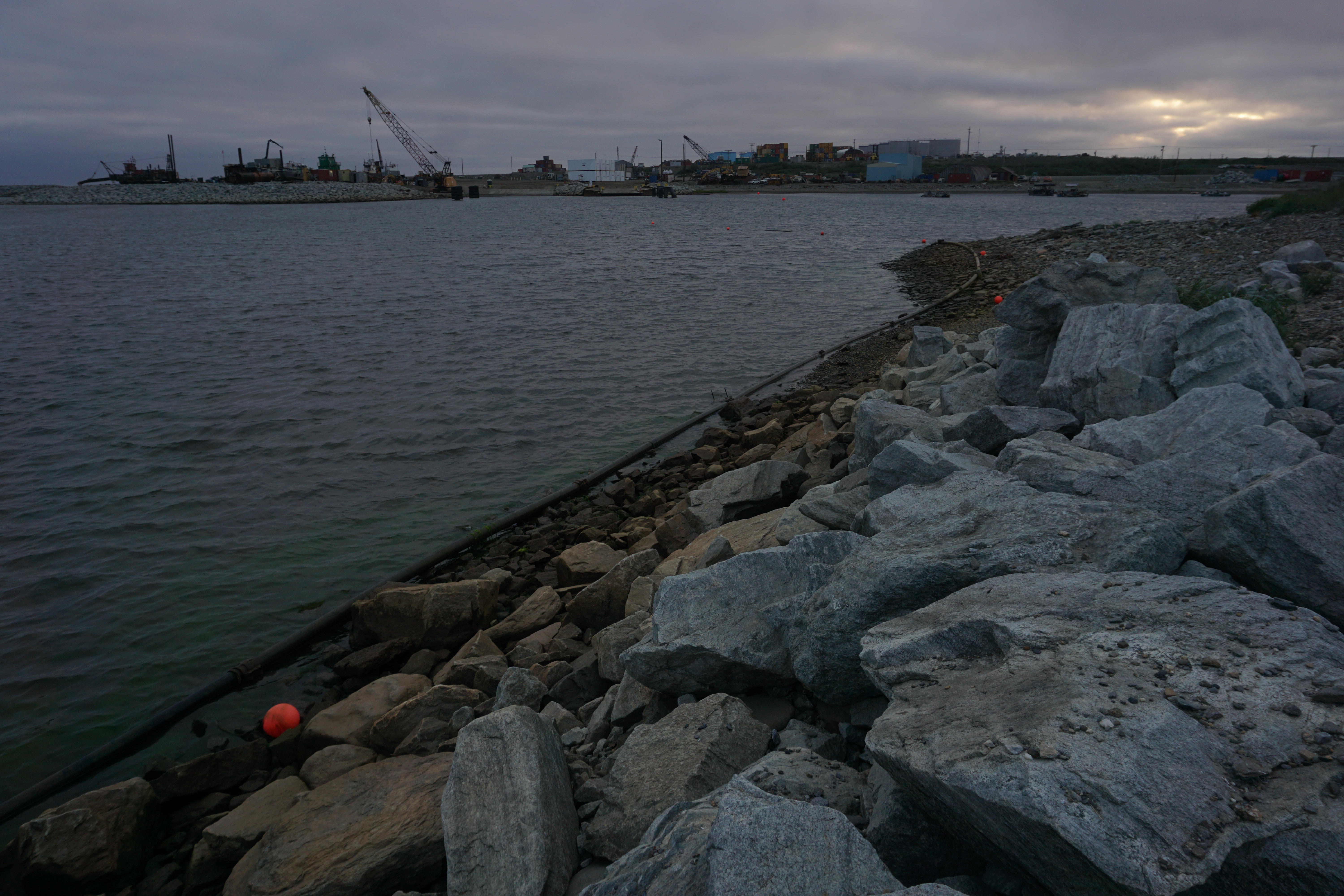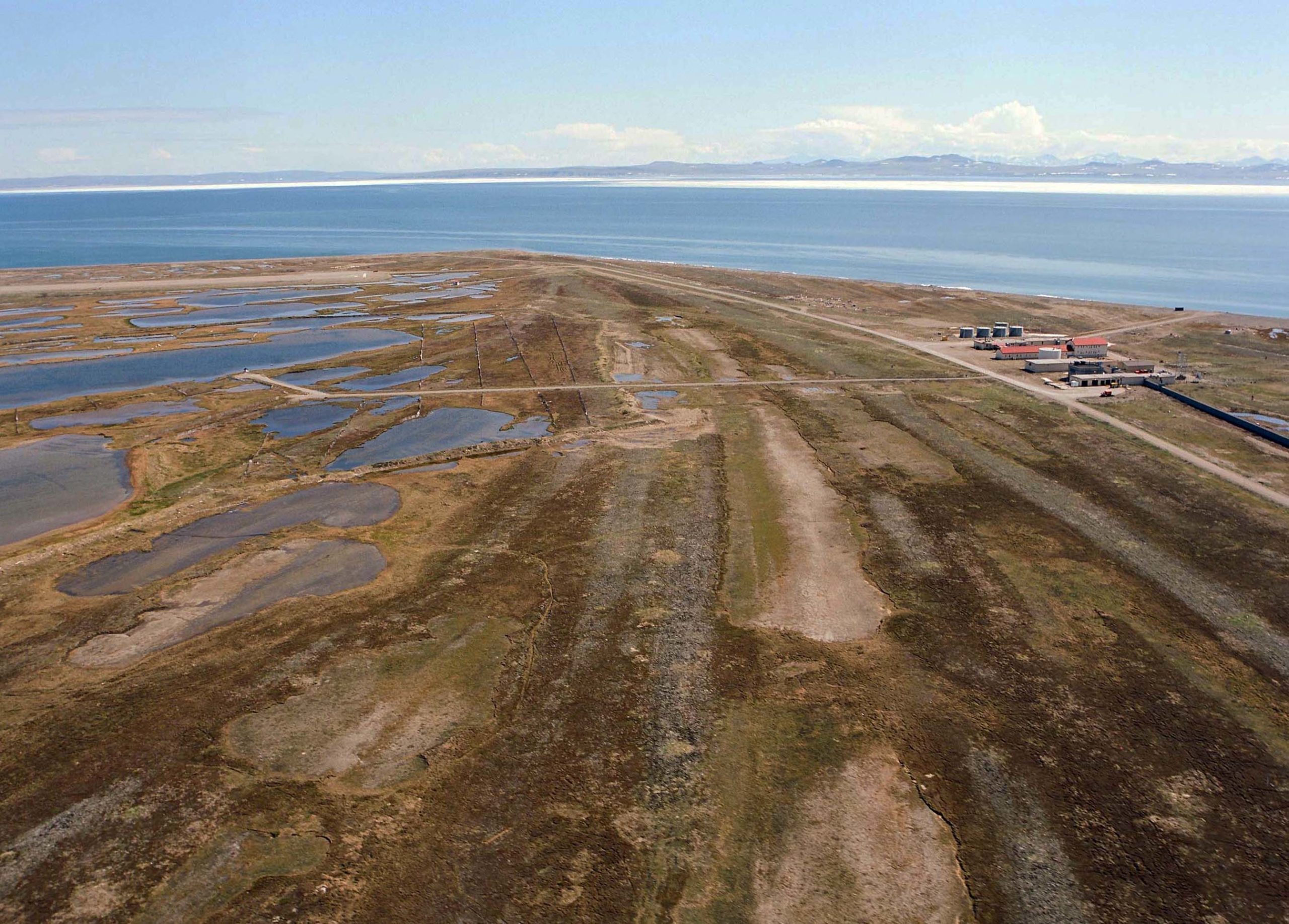Why the Biden administration must adopt an integrated investment strategy in Alaska’s Bering Strait region
The Bering Strait region is crucial to the future of the Arctic. Smart infrastructure investments will ensure the U.S. meets its obligations there.

Editor’s note: This op-ed is part of a series offering Arctic policy recommendations to the incoming administration of President-elect Joe Biden. Follow our social media channels (Facebook, Twitter) or subscribe to our daily newsletter to be the first to read new installments.
Climate change is real, rapid, and relentless and its impacts are well documented throughout the Arctic.
The impacts of a warming climate are especially evident in the lands and waters of Alaska’s critical Bering Strait region: a more accessible maritime environment and coastal border, increased risk to mariners, stronger and more frequent storms, threats to coastal communities due to coastline and permafrost degradation, and shifting subsistence patterns. Sea ice decline poses security threats, as well as new and expanded opportunities for resource development — including increased shipping and commerce, tourism, and recreation activities.
These realities require a significant investment in research to inform effective policy development in a broad range of local, state, national, and international contexts. However, the Bering Strait region does not have the basic infrastructure needed for this critical research — or to address these ever-growing challenges and future possibilities.
The absence of a deepwater port between the U.S.-Canada boundary in the Beaufort Sea and Dutch Harbor in the Aleutian Islands must be corrected if the U.S. is to effectively address the country’s security interests, economic opportunities, and key research needs associated with climate change.
But that by itself isn’t enough.
The United States needs a layered and interconnected set of creative solutions to address the realities and dynamics of an increasingly consequential Bering Strait region.
Although building and maintaining infrastructure in the Arctic is costly, these costs can be managed down by linking complementary missions together, building multi-use infrastructure, and incentivizing public-private partnerships. I recommend the Biden administration establish a “Bering Strait Security, Research, and Commerce Corridor,” to leverage existing infrastructure in Nome, Alaska to pursue a vision of interconnected investments in security, commerce and research in the region.
Think of it as Arctic “Legos.” For example, an Arctic port could be connected to other infrastructure and support-related missions, so that in the end, multiple local, state, and federal needs are met in a more cohesive and cost-effective manner.
The City of Nome is uniquely positioned to support this vision because it is located on the southern Seward Peninsula on Norton Sound of the Bering Sea. The city has an airport capable of handling daily jet service, a serviceable road network, a campus of the University of Alaska, access to subsea fiber optic cable, health care facilities, and an experienced port management team.

A Nome infrastructure complex should be connected by road to Port Clarence, Alaska, 67 miles north of the city that can serve as a port of refuge and support complementary activities. This integrated and interconnected infrastructure concept would establish a Bering Strait corridor capable of addressing regional and national interests presented by a new, global Arctic. Indeed, the 2021 National Defense Authorization Act directs “Not later than March 1, 2021, the Secretary of Defense shall submit to the congressional defense committees a report setting forth an updated assessment of the estimated cost of constructing, maintaining, and operating a strategic port in the Arctic…”
In order to realize this vision, the Biden administration should support the findings of the recently completed Port of Nome Modifications report by the Army Corps of Engineers’ that calls for the U.S. to “provide shore-side support for research vessels, cruise ships, oil tankers, and most importantly, U.S. Coast Guard icebreakers and national security cutters, as well as U.S. Navy vessels,” and should also support funding required to establish America’s first Arctic port.
The new administration should also support and advance — in consultation with community and regional leadership, and in partnership with the University of Alaska — the creation of a “Bering Strait Research Center.” The BSRC would enable and advance climate change research, as well as other basic and applied research activities to address critical gaps in our understanding of the Arctic region. The center’s research agenda and activities must take into account community needs and research priorities and include traditional knowledge. This new facility should be connected to the new port complex, and include office space, research facilities, and critical services sufficient to host a broad range of regional, state, and federal partners to include the United States Coast Guard, Department of Defense, Department of Homeland Security, and Department of Commerce. The center should also support search and rescue operations, U.S. commercial fisheries, and the monitoring of international maritime activities.
The establishment of a Bering Strait Security, Research, and Commerce Corridor and the construction of the infrastructure it requires, such as an Arctic port, research, and commercial facilities, should not be viewed as a cost to the United States. Rather, it is critical, strategic and overdue investment in America’s Arctic.
As the Biden administration looks to build back better, any legislation intended to develop the country’s infrastructure must include an investment in America’s strategic Bering Strait region.
Mike Sfraga is director of the Polar Institute and Global Risk and Resilience Program at The Woodrow Wilson International Center for Scholars.
The views expressed here are the writer’s and are not necessarily endorsed by ArcticToday, which welcomes a broad range of viewpoints. To submit a piece for consideration, email commentary (at) arctictoday.com.